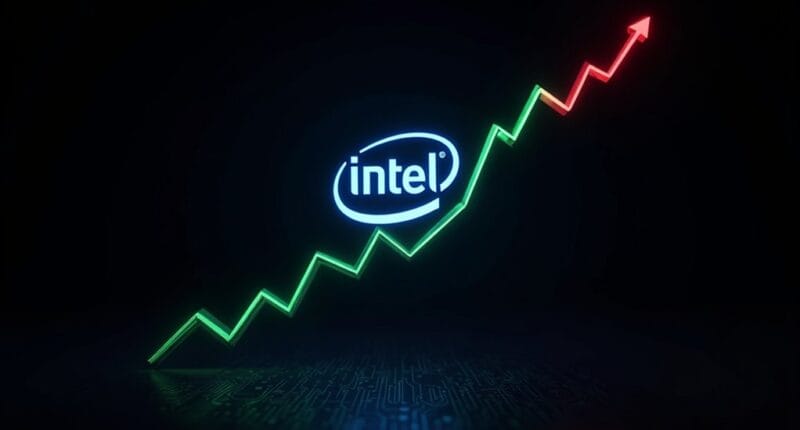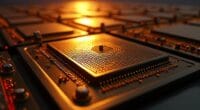Intel’s dramatic 13.3% surge came from a perfect storm of bold moves. New CEO Lip-Bu Tan didn’t mess around, slashing middle management and announcing plans to cut 20% of the workforce globally. The potential TSMC partnership sparked investor excitement, while the company’s renewed focus on AI development showed it wasn’t sleeping on tech trends anymore. While the S&P 500 and Nasdaq tumbled, Intel’s radical restructuring proved timing is everything—and there’s more to this comeback story.

Intel bucked the market’s downward trend in spectacular fashion during Q1 2025, surging 13.3% while the broader S&P 500 took a nasty 4.6% hit. The tech-heavy Nasdaq Composite fared even worse, plunging 10.4%. Talk about swimming against the current.
The stunning reversal came as new CEO Lip-Bu Tan wasted no time shaking things up. He took an axe to middle management – because who doesn’t love a good corporate restructuring? – and made it clear the old way of doing business wasn’t cutting it anymore. The company’s aggressive plan to reduce 20% of global workforce aimed to streamline operations and boost profitability.
The market ate it up, driving Intel‘s trading volume to $4.43 billion, a 43.18% spike that landed it among the 23 most actively traded stocks. Analysts maintain a mixed outlook with 23 buy ratings alongside 41 hold and 7 sell recommendations. During regular market hours from 9:30 AM to 4:00 PM Eastern Time, investors rushed to capitalize on the news.
Behind the scenes, Intel was cooking up something big with TSMC. Word got out about negotiations for TSMC to grab a 20% stake in Intel’s manufacturing operations. For a company that’s been struggling to keep up with competitors in the chip-making department, this potential partnership hit all the right notes with investors.
The company also finally got serious about AI – better late than never. Management admitted they needed to play catch-up and weren’t afraid to make “tough decisions” to get there.
In an industry where AI is basically eating everything else for breakfast, this wake-up call was long overdue.
All this played out against a backdrop of intense trade tensions and tariff drama. New restrictions threw semiconductor supply chains into chaos, but Intel’s domestic manufacturing presence gave it a potential edge.
Still, the TSMC deal talks added a dash of geopolitical spice to the mix.





